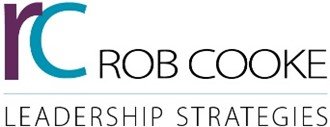
We Have to Relieve the Email Burden!
I often ask my clients how many emails they receive during the day. I am often astounded when I hear it can be in the hundreds. This can result in hours per day doing nothing but responding to emails. Recent studies have highlighted that most office workers spend more than 25% of their time on email. With this much time being spent on emails, and the time people are required to attend meetings there is little time left to read, research, coach, think, write and prepare. Taking breaks during the day is not an option. Often, emails get responded to when the employees are at home early in the morning or in the evening. With remote work the time saving from the lack of commuting time provides a greater opportunity for people to have the time to address their emails. If we want staff to embrace the requirement to return to the office on a full or part time basis we must hit the reset button on how email is being managed.
The following are some suggestions for consideration for relieving the email burden:
Set time aside to review your emails, not continuously. Make it clear to other what time of day you will be reviewing emails. E.g. 10:00am , noon, 2:00 and 4:00. There are no emergencies unless there could be an impending death or injury. If someone ‘really needs you’ (for whatever reason) they can text or call you.
Disable email arrival notices that pop up on your screen. This only serves to distract you from the task you are focused on.
Do not respond to a message unless you must. If you are copied on a message it rarely requires you to respond.
Do not use email or text to deal with sensitive matters or personal issues. These require a face-to-face conversation.
Use subject line as the focus of message. The subject line is the most important part of your email. A recent study highlighted that 75% of executives in the U.S. never read beyond the subject line.
Encourage the use of standard subject line headers that everyone agrees to use; for example:
Response required, and then when it is required.
Action required, which is something that needs to be done, email response not required.
For Information Only, meaning not response is required.
Add as much information in the subject line as possible to make it easier for the reader.
Use the opening line to reiterate what is stated in the subject line. While it’s repetition, that’s good; repetition is good to ensure the message is clear.
In the body of the email, avoid unnecessary verbiage and keep messages short. Outline the important information and clarity what is expected of the reader. i.e., the response required or the action to be taken.
Don’t CC unless necessary. Determine the clear value to who might receive the CC. If you need to get a message to someone else, send a separate email designed specifically for that person.
February, 2023| Leadership Development
